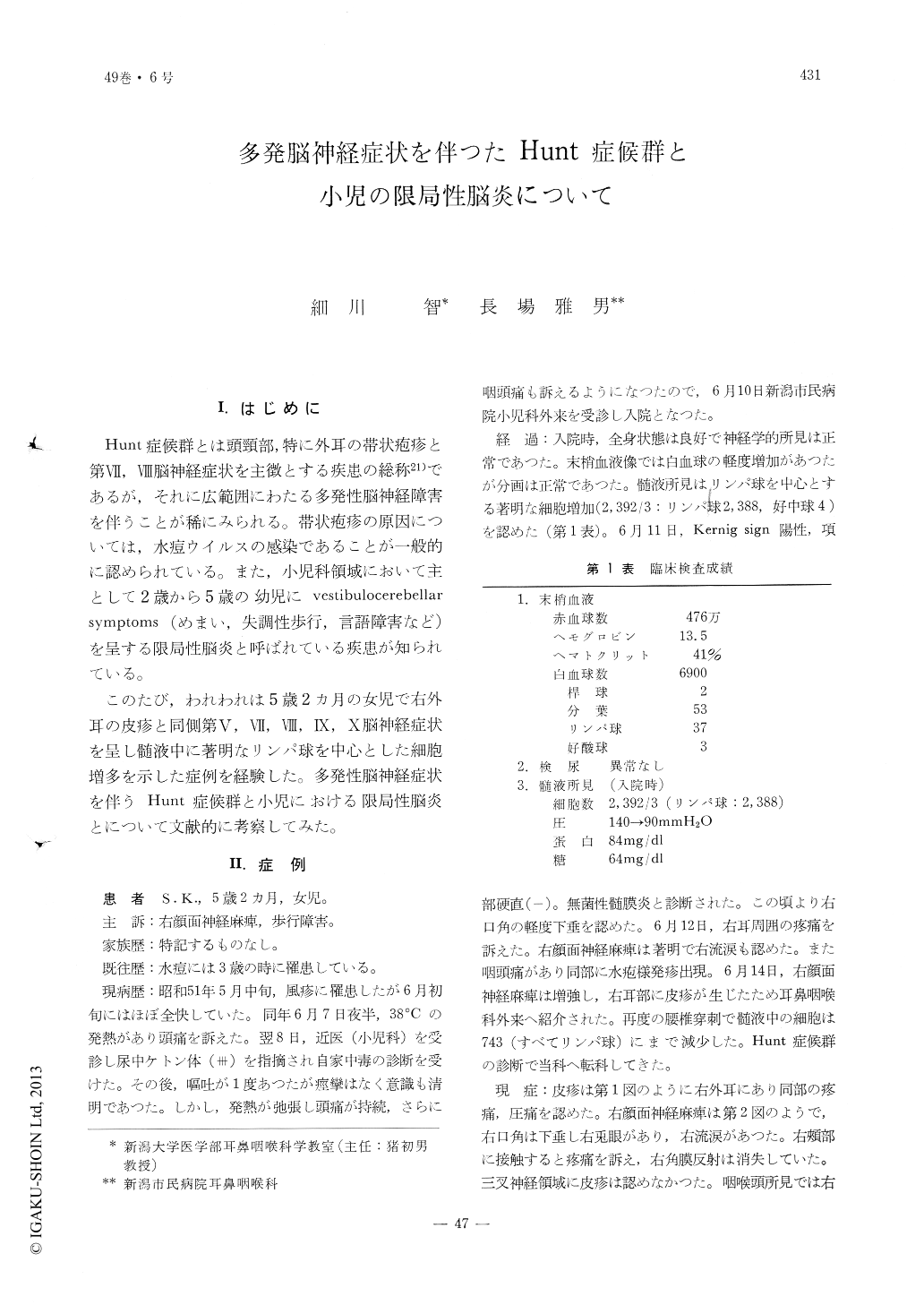Japanese
English
- 有料閲覧
- Abstract 文献概要
- 1ページ目 Look Inside
I.はじめに
Hunt症候群とは頭頸部,特に外耳の帯状疱疹と第VII,VIII脳神経症状を主徴とする疾患の総称21)であるが,それに広範囲にわたる多発性脳神経障害を伴うことが稀にみられる。帯状疱疹の原因については,水痘ウイルスの感染であることが一般的に認められている。また,小児科領域において主として2歳から5歳の幼児にvestibulocerebellarsymptoms(めまい,失調性歩行,言語障害など)を呈する限局性脳炎と呼ばれている疾患が知られている。
このたび,われわれは5歳2カ月の女児で右外耳の皮疹と同側第V,VII,VIII,IX,X脳神経症状を呈し髄液中に著明なリンパ球を中心とした細胞増多を示した症例を経験した。多発性脳神経症状を伴うHunt症候群と小児における限局性脳炎とについて文献的に考察してみた。
A case of Hunt's syndrome with manifestations of cranial nerve symptoms is reported.
A girl, aged 5, complained of headache, right-sided otalgia and pain in the pharynx, preceeding the onset of high-fever and vomitting. At the time of admission the patient was suspected of having aseptic meningitis due to remarkable lymphocytosis in the spinal fluid with memnigeal signs ; Kernig's sign was also positive.
Later, the patient developed a right-sided facial palsy with herpetic breakouts on the ipsilateral external ear and the pharyngeal region. The patient, also, developed a right sided trigeminal neuralgia with vertigo and gait disturbance. On the other hand, a localized encephalitis will show such symptoms as vertigo, cranial nerve palsy, disturbance of speech and walking, which are characteristics of brainstem or cerebellar disturbances, except for the herpetic outbreaks.
We believe that localized encephalitis has something in common with Hunt's syndrome with manifestations of cranial nerve symptoms.

Copyright © 1977, Igaku-Shoin Ltd. All rights reserved.


